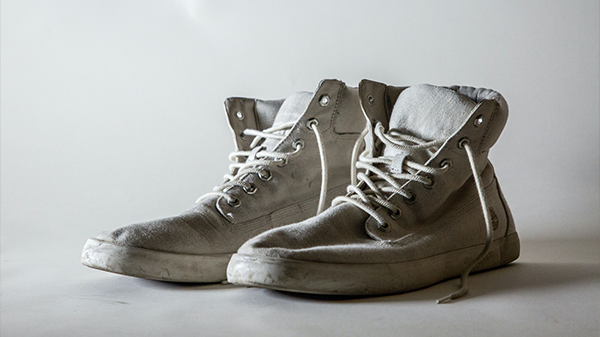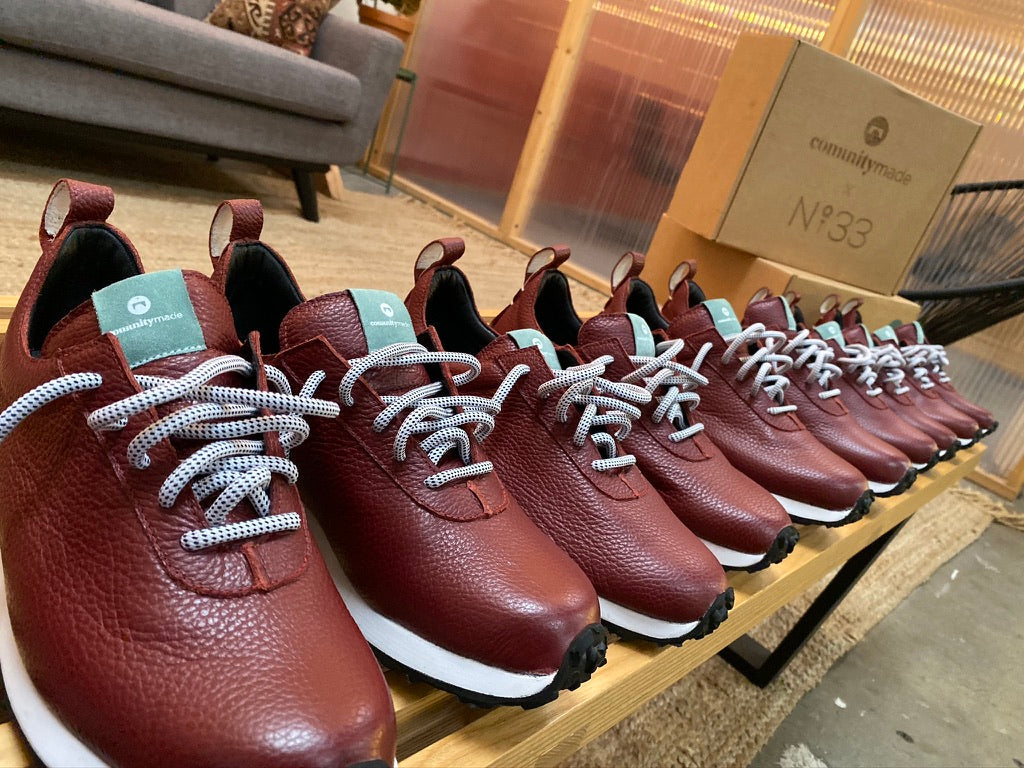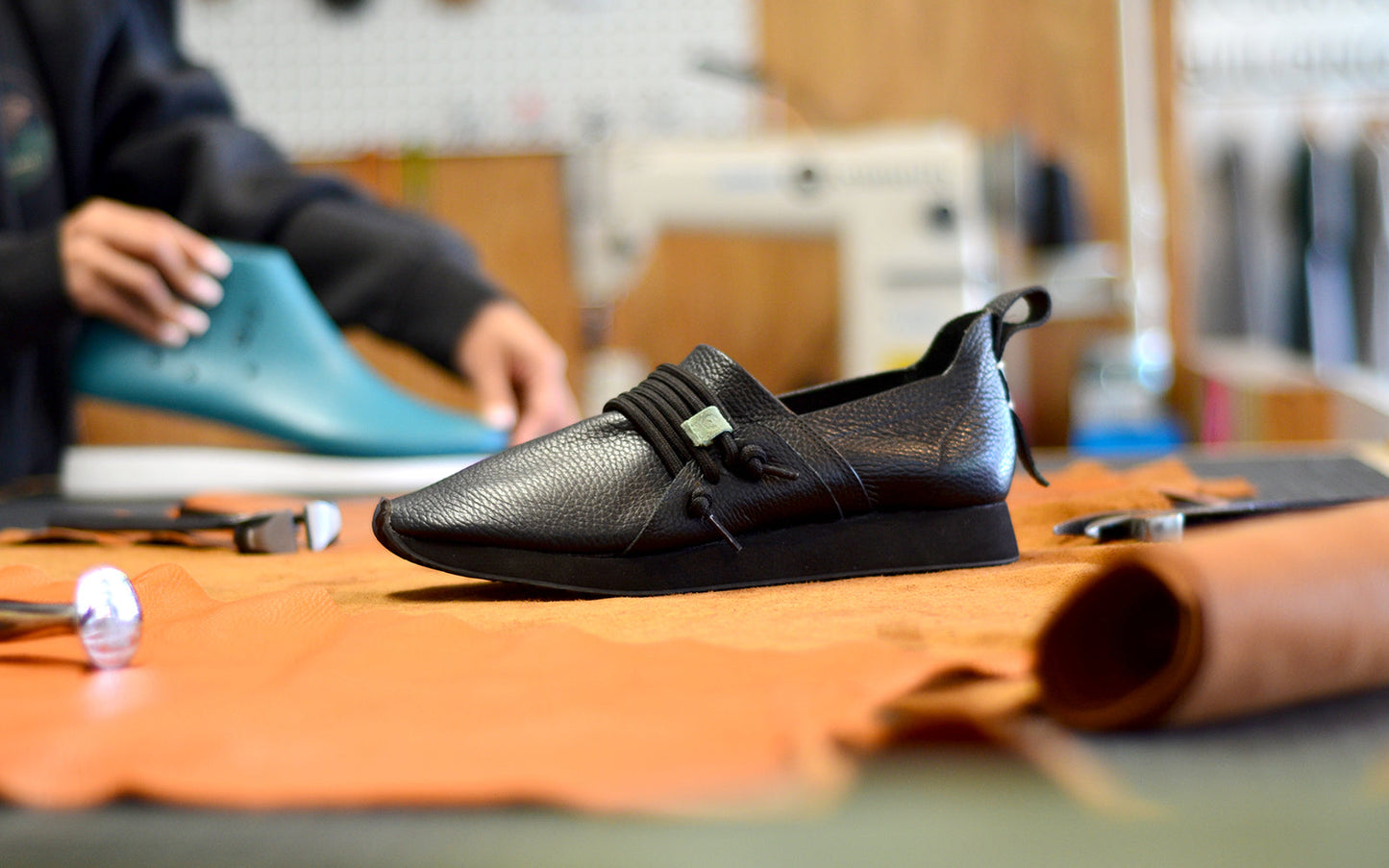
Wear quality shoes that are well-constructed and sturdy to prevent uneven wear of the soles. As you may already know, some shoes are better than others. So, you want to invest in shoes made out of quality materials and workmanship, as these tend to last longer.

When you invest in a high-quality pair of shoes, you expect it to last for a long time. Oftentimes, however, you may notice that the pair wears down so fast that you have to replace it soon. But when you do, you notice that those new shoes also don’t last that long due to wear and tear. So now you’re wondering, 'What could be causing my shoes to wear down so fast?'
If it’s any consolation, you are not alone. Many people complain about their shoes wearing down fast. Some say their shoes wear out on the inner side of the heel and forefoot. Others say the wear is moreso on the outside edge of the shoe.
Wear and tear can happen due to many factors, but the most common ones are shoe quality and the way you walk. In this blog post, we’ll cover these and more reasons why your shoes wear down so fast. But before we do that, let’s talk about how long a shoe lasts.
How long do shoes last?
Shoes don’t last forever. They have an expiry date, and that’s not when they are moldy and packed with holes. It’s usually earlier than that. On average, quality shoes should serve you for about 8 to 12 months before they start showing signs of wear. But some factors like use, storage, surface, and gait can add or subtract months off of them.
If your shoes wear down within a few weeks or months of use, it could be due to a range of reasons discussed in this article.

What causes shoes to wear down fast?
OVERPRONATION AND SUPINATION
Wear is mostly a result from the way that you walk. When you move around, you’re placing different amounts of weight on different parts of your foot. Your gait can show a pattern of neutral pronation, underpronation, or overpronation.
During normal pronation, your heel strikes the ground first, and pressure is applied uniformly as your foot rolls from heel to toe. The equal distribution of weight avoids putting extra pressure on specific areas of the foot. The even distribution of weight minimizes the wear and tear of shoes.
During overpronation, your foot rolls inward more than usual when you move. The unequal weight distribution, in this case, causes shoes to wear down more quickly on the inner edges and near the big toe.
Supination or underpronation is quite the opposite. It happens when the weight rolls onto the outer edges of your feet. The outward roll of the foot causes the shoes to wear out on the outside faster than on the inside.
—
POOR CONSTRUCTION QUALITY
This refers to how the shoe upper and sole attach. It can either be glued or stitched. High-quality shoes are usually stitched, meaning the sole and upper are held together with thread. This allows you to repair or replace your sole when it wears out.
Glued construction is when the sole and upper are glued together. Gluing makes it easy for the pieces to detach. And when they do, it’s almost impossible to repair. So, you get permanent wear over time.
Additionally, quality shoes that include leather lining tend to last longer than those made out of rubber or fabric.

POOR QUALITY MATERIALS
Shoe upper
The quality of shoe upper influences how your shoes will age and how good or bad they’ll look over time. Poor quality shoes are designed with cheap materials like thin suede, low-grade leathers, and plastic. These don’t always last long.
On the other hand, a shoe upper made out of full-grain leather is breathable and durable. A leather-upper is especially ideal for men’s footwear.
Outer sole
Similarly, shoes that use poor quality outer soles tend to wear out pretty fast. Rubber outsoles last longer because rubber has excellent ground traction. On the other hand, plastic soles wear out fast. Continental rubber or a Vibram® Rubber Outsole is an excellent choice for the sole as it provides the right grip and does not wear down so fast.
—
TYPE OF MATERIALS USED
A single shoe has many parts made out of different materials. These materials determine how fast the shoe will wear down. Shoes made out of rubber soles, for instance, can withstand extra pressure and traction. Genuine leather is the ultimate material for shoes because the upper lasts long and molds to fit the shape of your feet.
—
THE GROUND OR SURFACE
Sometimes, it’s not about the shoe quality or your gait, but the ground you run or walk on. Generally, the rougher the sole, the more it's fit for off-road conditions. If you wear work boots on off-road, then the sole would wear out quite quickly. The same happens when you wear off-road shoes on concrete, pavement, or tarmac.
How to prevent uneven wear
While wear and tear is inevitable, there are a few things you can do to prevent an uneven wear. Here are several tips that you may find useful:
• When you buy running shoes or workout shoes, go for styles that match your foot type and gait. It should fit your ankle and offer adequate arch support. You should also measure your feet correctly to ensure you’re wearing the right size to support your feet.
• When it comes to everyday shoe styles, go for one with comfortable and durable soles. Cheap soles tend to wear out fast. It is also a good idea to get more pairs of shoes, so you don’t overuse a single pair and cause premature wear and tear.
• Stuff your leather shoes with a newspaper or a wooden shoe tree to prevent creasing and allow the leather to breathe. Wooden shoe trees or newspapers also absorb moisture or sweat that can age your shoes and cause them to smell nasty. Also, you want to protect your shoes from dust.
• Buy shoe inserts to help align your feet properly. These are well-cushioned pads. They offer soft cushioning effects that favor one side of the heel, allowing you to alleviate overpronation and supination depending on how you place them in your shoes.
• Wear quality shoes that are well-constructed and sturdy to prevent uneven wear of the soles. As you may already know, some shoes are better than others. So, you want to invest in shoes made out of quality materials and workmanship, as these tend to last longer.
• Visit a podiatrist to rule out any foot alignment issues. Should there be an issue, your podiatrist will offer solutions, like exercise or custom orthotics to improve your posture and balance.
As mentioned earlier, wear and tear is inevitable. But with this guide, you should be able to reduce the rate at which your shoe wears down.





